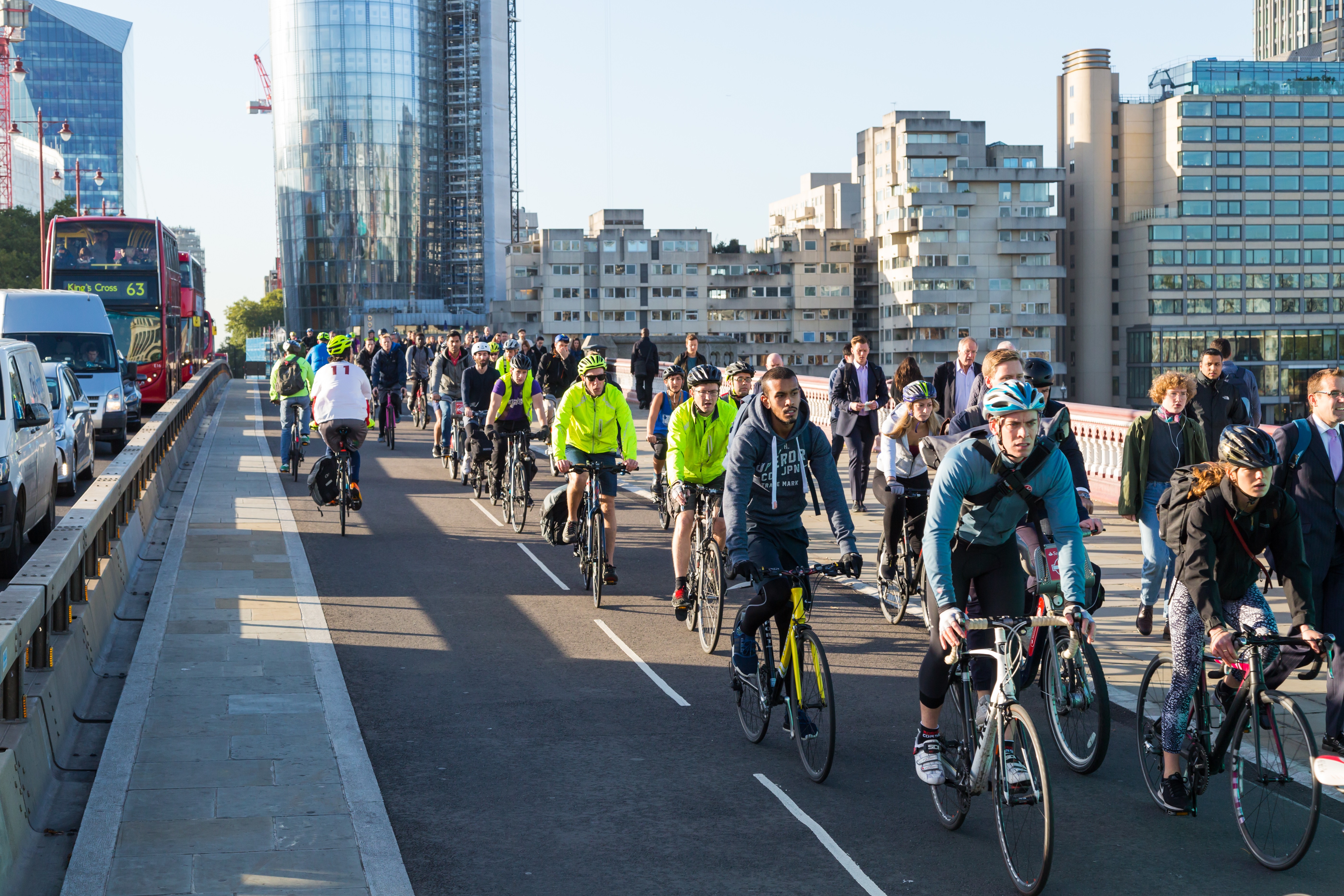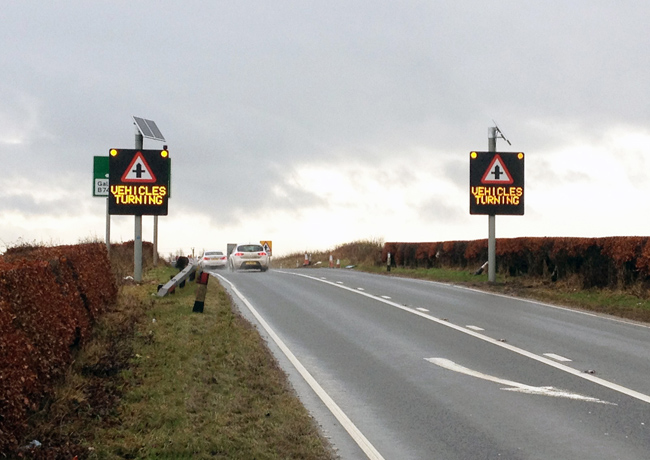
As cycling becomes an increasingly popular method for commuting and recreation, what moves are afoot to keep the growing numbers of cyclists safe on ever-more-busy roads? Alan Dron puts on his helmet and pedals off to look.
It would have seemed incredible just a decade ago, but cycling in London has become almost unfeasibly popular. The Transport for London (TfL) June 2017 Strategic Cycling Analysis document noted there were now 670,000 cycle trips a day in the UK capital, an increase of 130% since 2000. This despite the fact that vehicular traffic volumes have been creeping back upwards (notably with ‘white vans’) and that deaths of cyclists in road accidents in the city have become an all-too-common phenomenon. TfL has worked with London’s boroughs on the London Cycle Network and two generations of ‘cycle superhighways’, to the point where there are now more than 100km of cycle superhighways and ‘quietways’ in the capital, with 10% of the population living within 400m of one. And, by 2022, they are due to have expanded to around 350km. Today’s situation is hardly in the same bracket as famously cycle-friendly cities such as Amsterdam, of course, but a startling statistic in a city that had long been seen as a temple to the internal combustion engine.
Need for data
Many councils are creating cycle-friendly schemes, but to do so they need the necessary data that shows how many cyclists are travelling on which roads, so that dedicated cycle routes can be positioned where they will do most good. Leicester City Council, under its 2015 Cycle City Action Plan, aims to have around 10% of city centre travellers on bicycles, for example. From a 2015 baseline of 13,000 people using cycles in the city, numbers are growing at around 10% annually. The council has established 17 monitoring sites using
Daily record
Detecting cyclists has become an increasingly sophisticated process. UK company Traffic Technology brings together the French Eco-Counter system with its own display units to create a cycle counter that uploads a daily record of cycle activity in its immediate vicinity. The cycle counter uses an inductive loop system, but one that is extremely selective: failure to meet just one of 13 criteria - such as speed, magnetic signature and other aspects of the object’s dynamic signature - means it is excluded from the system’s calculations. “We did a pilot project a few years ago in Chichester, West Sussex,” said Richard Toomey, director and CEO of Traffic Technology. “We created a dynamic safety envelope for cyclists at a particular roundabout, Northgate Gyratory.” This had experienced a series of accidents to cyclists in preceding years. The Northgate scheme used the cycle counters and a series of wirelessly-linked display signs that illuminated in turn as a cyclist circumnavigated the gyratory, warning drivers of the presence of a bike ahead. “All the signs ‘talked’ to each other wirelessly, so there was no massive infrastructure buried in the road,” said Toomey. Sadly, the experiment did not last, as the government-funded scheme covered only capital expenditure, not maintenance, but the principle was proved.
Cycle usage
Cycling counters are also used in London’s Hackney, with the aim of informing the borough council of changing trends in cycle usage in the area, said Laura Balzanella, principal transport planner in the council’s Streetscene team. Hackney is believed to be the only place in the UK where more people cycle than drive to work. One indicator of the popularity of cycles is that a traffic counter at Goldsmiths Row in Hackney - a former vehicular traffic road that has now been dedicated to cycle and pedestrian traffic - has clocked up more than five million bicycle passages since August 2013. “It’s just a point counter, so we know how many people are using the road [but] it does give us flow data. Weekdays and summer are, perhaps naturally, the heaviest times for cycle usage,” said Balzanella. “We have other counters in the borough. We want to understand what the growth of cycling in the borough is, with a view to making future improvements.” With a network of cycle routes and quietways throughout the borough, the council goes out of its way to promote cyclists’ safety. A remarkable 72 cycle safety courses were held in 2017; a cycle trainer is embedded with the local schools; roads outside schools are closed to vehicle traffic at certain times of day; and an annual ‘Bike around the borough’ event last year attracted 1,800 children putting their cycle training into use over an eight-mile course.
Separate cycleways
A more traditional method of ensuring cyclist safety – separating them from vehicular traffic – was opened in January in Ellesmere Port, Cheshire. Here, a £1.1 million scheme involved creating a new 320m cycleway through the busy Two Mills junction where the A550 and A540 meet, which has been the scene of several accidents involving cyclists in recent years. The A540, which runs between Chester and Hoylake, is popular with cyclists, with group rides setting off from a café near the junction during most weekends. The scheme creates a new cycleway through the junction, running alongside the southbound A540, crossing two new islands on the A550, then continuing along the former road. New traffic lights and crossings also make it easier to navigate the junction. “We want to provide cycling facilities that give people a genuine choice about whether to travel in their car or to get on a bike instead,” said Highways England project manager Phil Tyrrell. “If we can encourage more people to use their bikes for local journeys, then this will also improve the flow of traffic for drivers travelling longer distances.” Highways England has a £100 million cycle fund that is planned to finance around 200 schemes to ease cyclists’ progress over the next five to six years. These schemes include a new 1.5-mile shared cycle path alongside the A585 in Fleetwood and a similar 600m path near Junction 21 of the M60 alongside the A663 in Oldham, together with improvements to footbridges, signs and road markings.
Reducing cycling casualties
In Europe, despite a steady fall in road casualties, a 2016 European Commission report showed that the rate of decline was much slower for cyclists than in general. Perhaps unsurprisingly, figures were worse in urban areas, where 12% of road fatalities were cyclists compared to 8% of all who died on roads. Also, perhaps unsurprisingly, given its popularity as a mode of transport, the Netherlands had the highest fatality rates, with 25% of all road deaths in that country being cyclists. In Denmark, another popular cycling nation, cyclists accounted for 16% of road deaths. A 2015 report by the Netherlands’ Institute for Road Safety Research, Cyclist Safety in the Netherlands: Past, present and future, found that the well-understood principle of physically separating vulnerable road users, such as cyclists, from vehicular traffic was a major factor in reducing fatalities. Cycle paths were effective, but were not the only measure, with political will and good infrastructure planning also playing significant roles. Additionally, in Dutch law, in an accident between a vehicle and a bicycle, the vehicle driver is, by default, held to blame, unless it can be proved otherwise. This undoubtedly instils caution among drivers.










